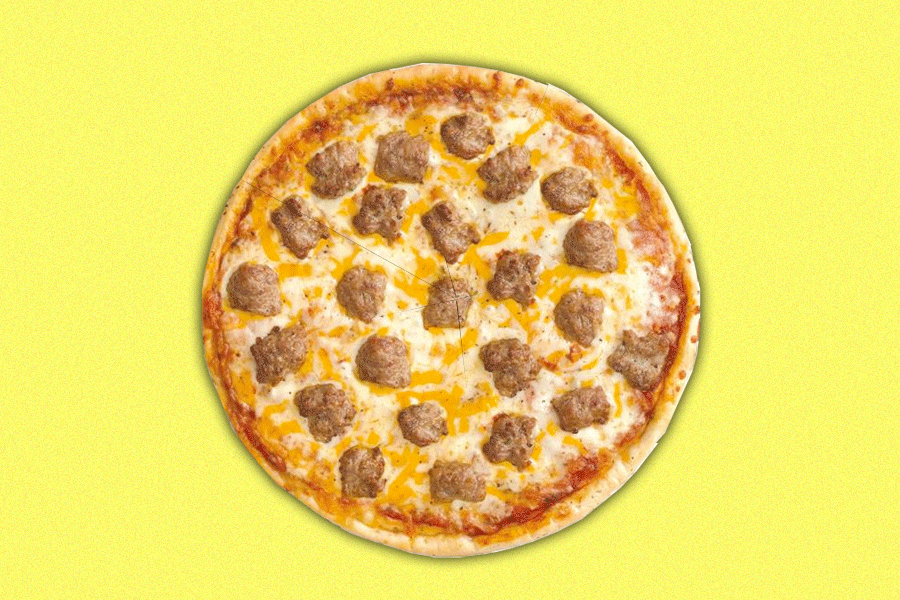Low-carb diets (like Keto) promise big weight loss by, essentially, mimicking starvation. They also promise to ruin pizza for everyone: Because the crust is stuffed full with carbohydrates, low-carb devotees have invented depressing non-crust alternatives that allow them to indulge in makeshift pizza without breaking their diet. Such substitutes include low-carb tortillas (gross), portobello mushrooms (really?) and another layer of pepperoni (…go on?).
For Ketogenic cultists, this approach to pizza makes total sense: A strict Keto diet consists of 80 percent healthy fats (from nuts, vegetables and oils) and 20 percent proteins, leaving virtually zero room for carbs. According to its proponents, severely restricting carbs and increasing your fat intake allows the body to burn fat instead of glucose, which results in reduced appetite and weight loss. End result: The crust is essentially the devil, whereas the sausage is, if not a host of luminous seraphim, at least a moderately well-behaved cherub.
But since we know that encased meats are terrible for you, can it really be the case that the crust is even worse?
Well… no.
“This is absolutely not the case,” says Dana Hunnes, senior dietitian at the Ronald Reagan UCLA Medical Center. “Especially if the crust is whole grain. While it’s true that white-flour crusts aren’t particularly ‘healthy’ because they lack fiber, I would never venture to say that sausage is ever healthy,” she continues. “Sausage is a processed meat, often containing nitrites [preservatives known to cause cancer]. According to the World Health Organization, processed meats are a class 1 carcinogen.” She also mentions that sausage is high in saturated fats, which increase your risk of heart disease.
But again, the classic white-flour crust isn’t all that healthy either: It lacks fiber, vitamins and minerals, according to nutritionist David Friedman, author of Food Sanity: How to Eat in a World of Fads and Fiction. As a result, you’re able to eat slice after slice without feeling full, which (obviously) leads you to pack on weight in the long run.
So what, then, does a healthy pizza actually look like? “When my husband, son and I make a homemade pizza, we start with a whole-grain crust (using 100 percent whole-wheat flour),” Hunnes says. “We top the pizzas with mountains of vegetables: Eggplant, artichoke hearts, onions, mushrooms, tomatoes and roasted bell peppers. If you use real cheese [as opposed to non-dairy alternatives], I recommend halving or quartering the ‘usual’ dose — we don’t need all that saturated fat.”
Friedman offers up this unconventional recipe for a healthier pie: “Simple Mills organic gluten-free pizza dough, pesto, Daiya dairy-free mozzarella, onions, olives, mushrooms, crushed walnuts and homemade raspberry sauce (cook organic frozen raspberries for 20 minutes, and add balsamic vinegar),” he says. “Sprinkle on some oregano, and you’ve got the most delicious, low-calorie, healthy pizza you’ve ever tasted.”
More realistically, you could eat whatever pizza you like in moderation. Because let’s be honest: If you’re eating enough sausage pizza to cause cancer, you seriously need to reconsider your entire diet.

